Deciding where to invest your hard-earned money can be exciting. But the wealth of financial news available is extensive, and nobody has the time to become an expert on every single stock. That’s where investment newsletters come in.
The best investment newsletters provide stock market news, research, analysis and good stock recommendations. To help you narrow down your options, we’ve put together our top picks of the best investment newsletters in Canada.
Ticker Nerd
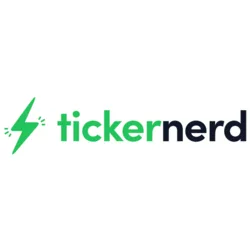 Our first pick for best investment newsletter is, of course, Finder’s own Ticker Nerd—we were so impressed by the insights offered here that we acquired the company in 2021. Described by its team as “the only investing newsletter you’ll ever need,” the idea behind Ticker Nerd is to inform readers about stocks with the potential for huge upside.
Our first pick for best investment newsletter is, of course, Finder’s own Ticker Nerd—we were so impressed by the insights offered here that we acquired the company in 2021. Described by its team as “the only investing newsletter you’ll ever need,” the idea behind Ticker Nerd is to inform readers about stocks with the potential for huge upside.
If you don’t have the time or the technical know-how to research stocks in detail, it’s well worth checking out.
How does it work?
The stocks featured in this newsletter aren’t chosen only based on one person’s opinion. Instead, Ticker Nerd uses advanced tracking software to monitor hundreds of signals and data points, including everything from fundamental and quantitative analysis to hedge fund trading data and social media sentiment.
The goal is to find hidden gems before their price skyrockets. Ticker Nerd’s team of analysts assesses each stock that passes the screening process.
What do you get?
With your membership, you receive a monthly newsletter that includes a detailed report on two to three stocks of interest. This report breaks down what the company does, why it’s growing in interest, how it could be more valuable and what risks to watch out for. You also get access to Ticker Nerd’s growing report archive.
How much does it cost?
A Ticker Nerd Essentials Membership is $199 USD a year or $39.95 USD a month, but there’s a 30-day free trial available so you can try before you buy. Plus, you can cancel any time.
The Motley Fool
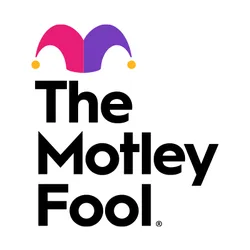 The Motley Fool was founded in the US in 1993 by brothers Tom and David Gardner. Since then, it has become a well-known player in the financial world and a major source of investment news in Canada. It aims to help people attain financial freedom through its investment newsletters and reports. It has an extensive range of newsletter subscription plans to suit the needs of different investors, with different price points for each.
The Motley Fool was founded in the US in 1993 by brothers Tom and David Gardner. Since then, it has become a well-known player in the financial world and a major source of investment news in Canada. It aims to help people attain financial freedom through its investment newsletters and reports. It has an extensive range of newsletter subscription plans to suit the needs of different investors, with different price points for each.
If you’re looking for a well-informed, established investment newsletter—and you are willing to pay for the service—The Motley Fool is well worth a closer look.
How does it work?
You sign up for your chosen subscription plan. Highlights include Stock Advisor to provide recommendations on well-established companies, and Rule Breakers, which focuses on stocks with massive growth potential in emerging industries.
What do you get?
As part of the subscription service, you get the following:
- Two new stock picks each month.
- The Motley Fool’s top five stocks to “buy now.”
- Starter stock recommendations for new and experienced investors.
- Community and educational investing resources.
How much does it cost?
The cost depends on which subscription service you choose. For example, the Stock Advisor newsletter is $299 CAD a year, while Rule Breakers is $499 CAD a year. The Hidden Gems newsletter highlights small-cap Canadian and US stock picks and costs $499 CAD a year.
Seeking Alpha
 Seeking Alpha Premium aims to provide independent and balanced stock research, fundamental analysis tools, crowdsourced debates, reliable news and actionable market data to intermediate and advanced investors. It describes itself as created by investors, for investors.
Seeking Alpha Premium aims to provide independent and balanced stock research, fundamental analysis tools, crowdsourced debates, reliable news and actionable market data to intermediate and advanced investors. It describes itself as created by investors, for investors.
With prices in line with its competitors, Seeking Alpha is an all-in-one investing research and recommendation service.
How does it work?
Seeking Alpha gives you unlimited access to everything from earnings call transcripts to historic financial statements and access to dividend and earnings forecasts.
What do you get?
If you go for the Premium service—there is a Pro version—you receive up to 15 newsletters a year by email as well as access to blogs, premium investing ideas, Seeking Alpha author stock ratings and the ability to compare stocks side-by-side with peers. You also get Stock Quant Ratings and Stock Dividend Grades.
How much does it cost?
Seeking Alpha Premium is $239 USD annually. The Pro tier is $2,400 annually. However, you can register for free for Seeking Alpha’s basic package. This gives you limited access, including stock analysis email alerts and some investing newsletters.
Globe Investor
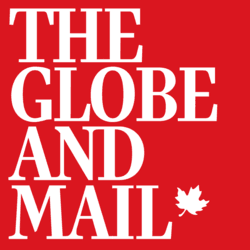 Globe Investor is the investment-focused arm of leading Canadian news outlet, the Globe and Mail. It offers great resources for new and experienced investors alike including market data, investment insight, stock picks, personal finance education, wealth building strategies and more.
Globe Investor is the investment-focused arm of leading Canadian news outlet, the Globe and Mail. It offers great resources for new and experienced investors alike including market data, investment insight, stock picks, personal finance education, wealth building strategies and more.
How does it work?
The Globe publishes content both online and in print. Subscription options vary, but you can opt for digital-only subscriptions to save some money. With Globe Investor, you can see how stocks are performing, get insight into market movements, find out how to grow your wealth and even track your own investment portfolio.
What do you get?
Globe Investor is accessible online, but you need a subscription with the Globe and Mail to access much of the content on the site including investment news, analysis and articles discussing stock picks and investments you should avoid.
That being said, you can access a lot of great features for free when you register for an online account including stock watchlists, stock performance data, the Globe’s stock screening tool and email alerts related to your investments.
How much does it cost?
A digital-only subscription to the Globe and Mail costs $1.99 CAD per week. Saturday-only delivery of the Globe and Mail plus access to the Globe’s digital content costs $6.99 CAD per week. Full Monday-Friday print delivery plus access to digital content costs $10.99 CAD per week.
Finimize
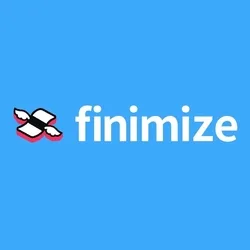 Finimize likes to keep things brief, delivering engaging emails of 500 words or less. It looks to give readers the latest financial news. It’s not an investment newsletter that directly tells you what stocks to buy or avoid. Instead, it aims to give you enough information for you to decide for yourself.
Finimize likes to keep things brief, delivering engaging emails of 500 words or less. It looks to give readers the latest financial news. It’s not an investment newsletter that directly tells you what stocks to buy or avoid. Instead, it aims to give you enough information for you to decide for yourself.
How does it work?
Finimize has a free service and a premium service. Its main output is the Daily Brief, which covers the top two stories of the day looking at “What’s going on?,” “What does this mean?,” and “Why should I care?”
What do you get?
Whether or not you’re a Premium member, everyone signed up to Finimize receives a copy of the Daily Brief, available in text or audio. However, if you sign up for the Premium service, you get access to an extensive library of insights and deep dives. You also hear from industry leaders at VIP events and become part of the Finimize community.
How much does it cost?
Receive the Daily Brief for free. However, if you’re interested in Premium membership, a yearly subscription is $79.99 USD. Otherwise, you can opt for a monthly subscription of $9.99 USD.
Zacks
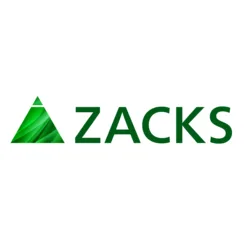 As another free investment letter, Zack’s provides subscribers with morning briefings on market developments—including the popular Zack’s Bull Stock of the Day. It also has its own Zacks Rank stock-rating system, which over the past 25 years, has more than doubled the S&P 500 with an average gain of +25.37% per year.
As another free investment letter, Zack’s provides subscribers with morning briefings on market developments—including the popular Zack’s Bull Stock of the Day. It also has its own Zacks Rank stock-rating system, which over the past 25 years, has more than doubled the S&P 500 with an average gain of +25.37% per year.
How does it work?
The Zacks Rank uses earnings estimates to provide a quantitative stock-rating system, giving you a stock-selection tool to use. This is also backed by a team of investment experts who look to provide market insights.
What do you get?
As a Zacks member, you receive a free e-newsletter each weekday morning that gives highlights of timely market news and commentary, five newly added Zacks Rank #1 stocks and the Bull Stock of the Day.
How much does it cost?
Zacks daily investment newsletter is free. It does have a Premium service, which costs $249 USD a year and gives users access to industry rank lists, premium screens, focus lists and research reports. Zacks Ultimate costs $299 USD a month and provides real-time buy and sell alerts from Zacks private portfolios.
Morning Brew
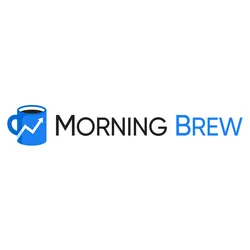 Next on our list is Morning Brew, which collates the day’s top stories and delivers them straight to your inbox for you to read with your morning coffee. Its flagship newsletter, Morning Brew, launched back in 2015 and covers a range of business-focused topics.
Next on our list is Morning Brew, which collates the day’s top stories and delivers them straight to your inbox for you to read with your morning coffee. Its flagship newsletter, Morning Brew, launched back in 2015 and covers a range of business-focused topics.
It gives a more generalized view, so expect little in-depth analysis. But for no cost, Morning Brew gives you a quick overview of what’s happening in the markets.
How does it work?
Morning Brew is a free daily email newsletter that covers the top stories across the markets, geopolitics and finance. It’s succinct and easily digestible, so you can read it on your morning commute into the office.
What do you get?
You get an issue delivered to your inbox each morning. This is broken down into sections, like year-to-date (YTD) markets stats, including the Nasdaq, S&P and Dow. You’ll also get coverage of geopolitical events and top business stories of the day.
How much does it cost?
Morning Brew is free. All you have to do is sign up online to receive your first issue.
Benzinga
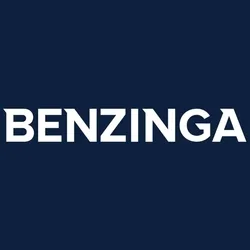 Benzinga describes itself as a “full-service, one-stop shop for investors of all stripes and styles.” It looks to give its users the news to make informed decisions and take control of their own financial future. This comes in the form of real-time news with actionable trading ideas.
Benzinga describes itself as a “full-service, one-stop shop for investors of all stripes and styles.” It looks to give its users the news to make informed decisions and take control of their own financial future. This comes in the form of real-time news with actionable trading ideas.
How does it work?
Benzinga keeps an eye on breakouts, unusual volume, analyst ratings, futures and options to recommend trades.
What do you get?
Subscribers receive two stock ideas each month in their inboxes.
Each email contains details on how to execute a suggested trade, an expected timeline and a stop-loss recommendation. You also get a link to a full analysis of the trade with a video explanation of why Benzinga has chosen each stock.
How much does it cost?
Benzinga’s Basic package is $37 USD a month, while its Essential plan is $197 USD per month and its Options Membership is $457 USD per month.
Morningstar
 Morningstar has a range of investment newsletters with a reputation for having an independent point of view and delivering valuable information and insight. They provide subscribers with a list of securities being monitored for their potential fit within each strategy and Morningstar’s latest analysis on market trends.
Morningstar has a range of investment newsletters with a reputation for having an independent point of view and delivering valuable information and insight. They provide subscribers with a list of securities being monitored for their potential fit within each strategy and Morningstar’s latest analysis on market trends.
How does it work?
Morningstar has four investment newsletters, each with its own focus. These include StockInvestor, FundInvestor, DividendInvestor and ETFInvestor.
What do you get?
As a subscriber, you benefit from analyst research, Morningstar’s Watchlists, bonus reports, email alerts, subscriber-only websites and the ability to ask the editor questions.
How much does it cost?
Pricing depends on which newsletter you choose to go for and whether or not you want digital or print access.
- StockInvestor – Digital $145 USD a year, Print $165 USD a year.
- FundInvestor – Digital $145 USD a year, Print $165 USD a year.
- DividendInvestor – Digital $199 USD a year, Print $219 USD a year.
- ETFInvestor – Digital $199 USD a year, Print $219 USD a year.
Open a stock trading account
Finder Score for stock trading platforms
To make comparing even easier we came up with the Finder Score. Trading costs, account fees and features across 10+ stock trading platforms and apps are all weighted and scaled to produce a score out of 10. The higher the score the better the platform - simple.
More on investing

What are the best stocks for beginners with little money to invest?
Want to dive into investing but don’t have much to spend? Take a look at these types of stocks.
Read more…
Meme stocks: What they are and examples of popular stocks
Meme stocks can produce large gains in short periods, but the stocks are volatile.
Read more…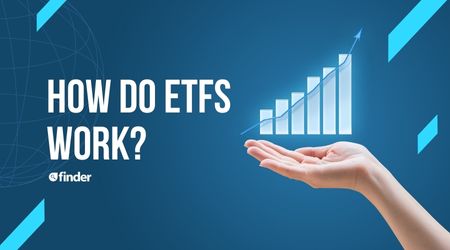
How do ETFs work?
Your guide to how ETFs work and whether this type of investment is right for you.
Read more…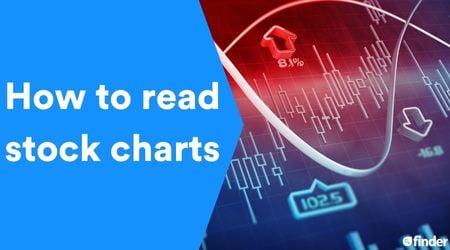
How to read stock charts
Learning how to read stock charts and recognize chart patterns can unlock your success as a trader.
Read more…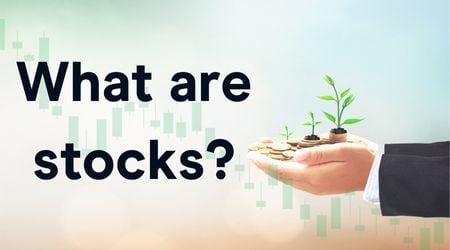
What are stocks?
Owning a stock means you own part of a company and can potentially grow your wealth. But there is a risk of loss.
Read more…
How to analyze a stock
Learn how to research stocks and find the right investment opportunities in 4 steps.
Read more…
